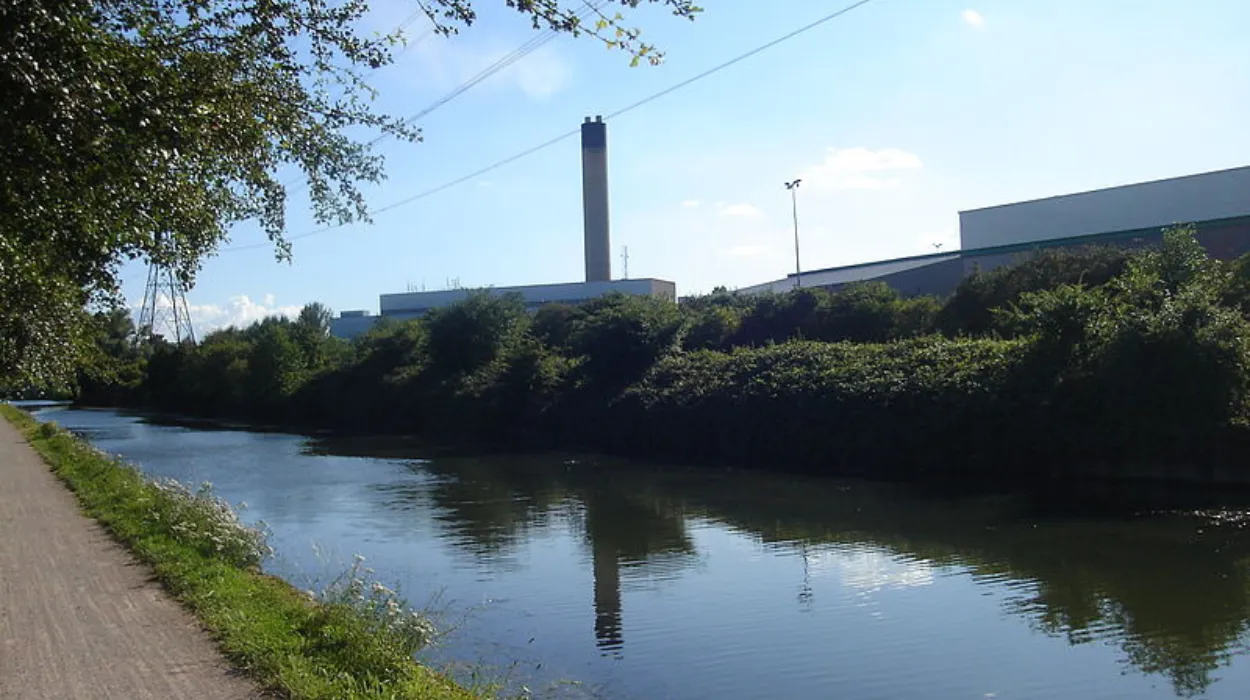Enfield (Parliament Politics Magazine) – Construction of the new Edmonton incinerator in Enfield faces ongoing delays due to local opposition and global challenges impacting progress.
According to overseers, the Edmonton Eco Park rehabilitation project, which was supposed to replace the aging waste-burning facility, has been delayed.
They have mentioned how the price of raw building materials is affected by Brexit, the conflict in Ukraine, and high interest rates.
Initially, the incinerator was supposed to be operational by 2027.
Although the North London Waste Authority (NLWA), which is overseeing the project, has not released any updated timelines, it states that “construction progress continues to be made.”
Council members from Barnet, Camden, Enfield, Hackney, Haringey, Islington, and Waltham Forest oversee the NLWA, which is in charge of getting rid of garbage from the seven boroughs.
Construction firm Acciona is still facing “challenges,” NLWA chair Clyde Loakes has admitted. Last year, it was reported the firm had faced “continued” delays in bringing in subcontractors for the next stage of development.
Cllr Loakes, who also serves as the deputy leader of Waltham Forest Council, told the Local Democracy Reporting Service:
“The delivery of the energy recovery facility has not stopped – construction progress continues to be made, with over 200 workers on site.
The subcontractors engaged by Acciona have consistently demonstrated excellent competency throughout the project. The civil works are largely complete and work to install the first two boilers and the steelwork for the turbines and flue gas treatment continues.
However, as we have consistently reported publicly, there are challenges being faced by Acciona and the programme is delayed.
Factors such as energy and raw material price shocks following the outbreak of the Ukraine war, high interest rates, and Brexit have impacted the construction industry.”
But despite the reassurances, campaigners against the scheme fear it is in “serious disarray”.
Carina Millstone, with the Stop Edmonton Incinerator Now Coalition, said:
“The NLWA’s stubborn refusal to release information about the delays in the building of the new incinerator suggests to us that the relationship with Acciona has irretrievably broken down, no doubt at a hefty cost to the councils.
We now believe the new incinerator will never be built.”
The Heat Networks Investment Project, a government-funded initiative to expand the number of networks in England and Wales, has contributed £66.5 million to the project.
The budget for the incinerator and other new waste facilities at Edmonton Eco Park, generally referred to as the “North London Heat and Power Project,” increased from £1.2 billion to approximately £1.5 billion in 2023, according to a report.
Top Haringey council members decided to put their plans to pipe heat from the incinerator on hold during a June cabinet meeting, citing “economic turbulence” and the necessity for “prudent” management.
The possible effects of the incinerator on North London’s air quality have also drawn criticism.
Cllr Loakes said the NLWA was following the “well-established scientific evidence that modern and well-run facilities do not pose a significant risk to public health”.
He said:
“By far the biggest source of air pollution is road traffic – even at its absolute peak level, the new facility would be responsible for just 0.52% of local particulates and 2.93% of NOx, compared to 30% from road traffic.
More than 35 facilities have been given consent since we submitted our application, and only three of them will have emissions cleaning technology as good as ours.”
He said the incinerator will lead to the “best environmental outcomes” and the “best value for our council taxpayers”.
He added:
“Councils must dispose of all the rubbish our residents throw away, so we need to focus on solutions to put an end to unnecessary waste, in particular plastic.”
A deposit return program and pledges to hold producers accountable for the waste they produce are two examples of the NLWA “beginning to see some progress,” according to the chair.
There will be “more people producing waste, which means we need to plan for increasing volumes of waste,” according to the NLWA, even if it anticipates that “people will recycle more and produce less waste in the future.”
What are the main reasons NLWA now says the incinerator may open in 2027?
Since 2020, the cost of construction materials has increased by almost 40%, pushing the total project costs above the budget. The limited number of skilled workers and the resulting associated labour shortage has made hiring labour more expensive and slowed progress on site.
Shipping costs and duration has also seen an increase, with delays worsened by geopolitical tensions impacting key transport routes like the Red Sea, which is causing impacts on material supplies. Additionally, campaigners have maintained their protests about the project, stating the project is overscale for current waste levels, the size are dangerous to human health, and undermines recycling and could further delay progress.
The main contractor, Acciona, continues to not be able to obtain subcontractors sufficiently to carry on the work on site efficiently; this has been causing many delays to date. NLWA has been putting pressure on Acciona to have a new and realistic updated timetable.


